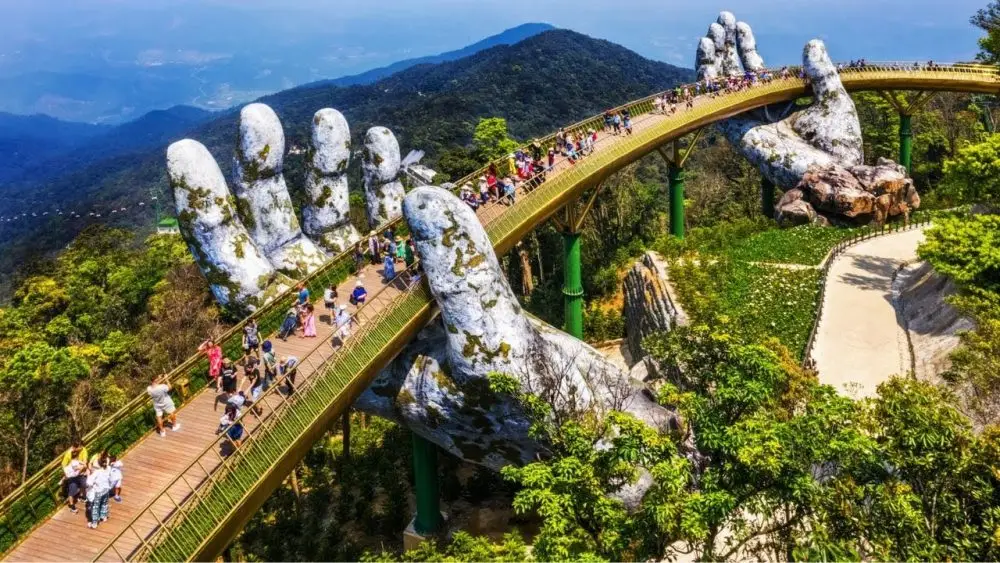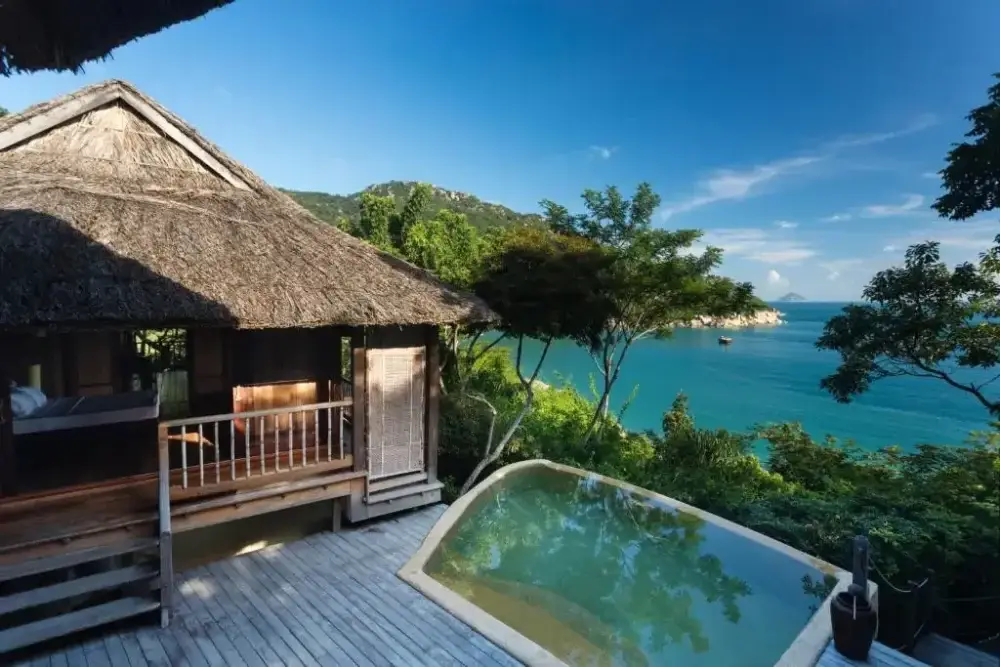Vietnam confidently strengthens its position as one of the best destinations for beach holidays in Southeast Asia. The endless coastline, developed resorts, mild climate, and stunning nature create perfect conditions for a seaside vacation. Vietnam’s beaches with white sand stand out, impressing with their cleanliness, azure waters, and picturesque panoramas.
Nha Trang – harmony of urbanism and tropics
The cityscape blends here with luxurious resorts stretching for kilometers along the bay. Despite the active infrastructure and popularity among tourists, Vietnam’s white sandy beaches in Nha Trang remain clean and well-maintained. The soft coastline with dunes and clear water creates a sense of complete relaxation.

Along Nha Trang, there are numerous restaurants, cafes, massage parlors, as well as water entertainment centers. From here, it is easy to reach the islands offering secluded relaxation away from the city bustle.
Phu Quoc – pristine beauty in the southern latitudes
Phu Quoc Island is the quintessence of untouched nature. Most of the coastal areas still look wild despite the growing popularity of the region. Here, Vietnam’s white sandy beaches are spread out along turquoise bays with coral reefs.
Particular attention is drawn to Long Beach – the longest and busiest stretch of coastline. Sao Beach and Kem Beach impress with the softness of the sand and the shade of the water worthy of a postcard. Phu Quoc beaches have become a favorite destination among those who appreciate tranquility, sea sunsets, and diving.
Mui Ne Resort – wind, waves, and sand dunes
Mui Ne is known for its unique landscape: sandy dunes near the coast resembling a miniature desert. Winds regularly blowing along the coast make the location popular among kite surfers.
Vietnam’s white sandy beaches in Mui Ne are famous for their smooth surface and gentle water entry. Storms are rare here, and the sea remains warm even in winter months. Besides swimming, tourists can stroll along the Fairy Stream, explore the sand cliffs, and try seafood right on the shore.
Danang – the perfect compromise
The city is a center of active economic growth, yet it offers amazingly comfortable conditions for beach holidays. The legendary My Khe is among the most picturesque spots in Asia. Danang’s beaches regularly receive international awards for cleanliness, service quality, and environmental safety.
Developed infrastructure, a wide choice of hotels, and proximity to the ancient attractions of Hoi An make the region particularly attractive. Vietnam’s white sandy beaches in Danang are suitable for a short weekend getaway or a long family vacation.
Best white sandy beaches in Vietnam: main destinations
Below are the key regions offering excellent conditions for beach tourism:
- Nha Trang – urban atmosphere, rich infrastructure, and beautiful mountain views;
- Phu Quoc – romance, seclusion, and the best snorkeling spots;
- Mui Ne – soft sand, dunes, and perfect conditions for kite surfing;
- Danang – pristine coastline and comfortable tourist base;
- Qua Lo – tranquil coast in the northern part of the country;
- Ho Tram – premium hotels and proximity to Ho Chi Minh City;
- Dai Lanh – a little-known gem with coral gardens;
- Con Dao – an archipelago with white sandy beaches and rare marine fauna.
Most resorts are ideal for travelers who prefer a combination of nature, comfort, and photogenic settings.
Infrastructure and conditions for relaxation
In recent years, the Vietnamese coast has been actively developing. New hotels, restaurants, diving centers, and transport routes are appearing in the most remote corners of the country. Special attention is paid to ecological sustainability and maintaining the cleanliness of Vietnam’s white sandy beaches.
Thanks to significant investments, the service at popular resorts meets international standards. Convenient air connections, availability of transfers, a wide choice of accommodation, and cultural adaptation make vacationing in the country comfortable for guests from around the world.
Attractions near the beaches
When planning a trip, it is worth considering opportunities to combine the beach season with sightseeing. Many cultural and natural attractions worthy of attention are located near well-known resorts.
- In Hoi An, you can explore the ancient trading port and Silk Street;
- In Danang, the Marble Mountains and the Lady Buddha statue are popular;
- In Nha Trang, there are thermal springs and the Long Son Pagoda;
- In Phu Quoc, you can visit turtle farms and historical lighthouses;
- In Mui Ne, a ride to the Red Dunes and the fishing village is a must.
This combination of beach relaxation and educational tourism makes Vietnam’s white sandy beaches a versatile choice.
When to go to the coast?
Vietnam’s climate is divided into two seasons: dry and rainy. The best time to visit most resorts is from November to April. During this period, the water is particularly clear, and the air temperature reaches a comfortable 28-32 degrees.
Southern resorts like Phu Quoc and Mui Ne are suitable for relaxation almost year-round. In the central part of the country, including Danang, the second half of summer may be accompanied by rains.
Useful tips for tourists
To fully enjoy your vacation, it is important to consider several factors. Below are practical recommendations:
- Book hotels in advance during the high season;
- Use sunscreen with high SPF;
- Wear light clothing made of natural fabrics;
- Prefer boutique beaches during peak season;
- Check insurance and documents when renting a scooter;
- Research infrastructure reviews before your trip;
- Bring comfortable shoes for excursions.
Following these tips will allow you to fully enjoy the atmosphere of the Vietnamese coast.
Conclusion
The charm of Asia is particularly vivid on the seaside. Vietnam’s white sandy beaches are not just a beautiful landscape but a complete combination of nature, traditions, and modern comfort.

With each passing year, interest in the Vietnamese coast continues to grow, and more and more travelers choose the beaches of Nha Trang, Phu Quoc, Danang, and Mui Ne for an unforgettable vacation.
The variety of landscapes, clear waters, soft sand, and developed infrastructure make Vietnam a truly unique destination!
 en
en  ru
ru  ar
ar  de
de  es
es  fr
fr  nl
nl  hi
hi  it
it  pt
pt  el
el 











